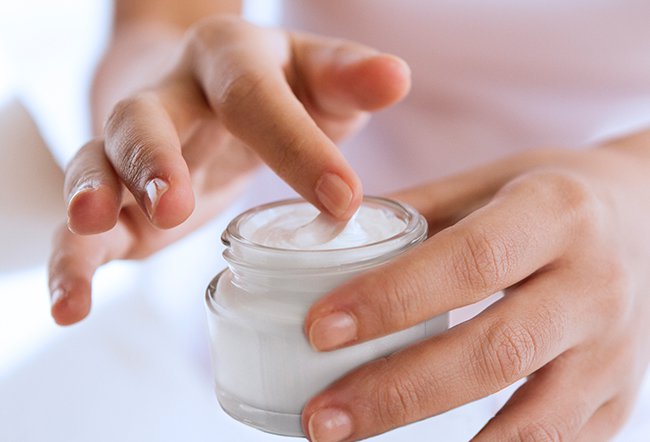What Is a Moisturizer Used For?

A moisturizer is a skincare product that provides hydration to the skin and is used for various conditions including:
- Daily skincare routine
- Eczema
- Psoriasis
- Atopic dermatitis
- Contact dermatitis
- Cracked skin, feet, or lips
A moisturizer helps your skin:
- Retain adequate moisture so that it does not get dry or rough.
- Avoid cracks in it and the lips.
- Lock in moisture after bathing.
- Improve its water content.
- Repair itself because it sheds dead skin cells.
- Get a glow because of the extra hydration.
- Prevent excess oil formation over the skin.
A moisturizer creates a protective barrier against environmental changes such as dry or cold air.
6 tips to keep your skin moisturized
Along with applying a moisturizer, certain tips can help preserve the water content of your skin and thus help your skin moisturize itself naturally, which include:
- Drink enough water: Hydration not only is important for the internal functions of your body but also shows up on your skin.
- Avoid taking hot showers: Hot showers strip your skin of all its natural oil. Instead, take a warm shower for a short duration and follow up with a moisturizer while the skin is still moist.
- Do not rub your skin after washing it, instead pat it dry: Rubbing the skin irritates the skin and can make it drier. Be gentle on your skin and pat it dry.
- Use mild soaps and detergents: Detergents and soaps with strong chemicals can be harsh on your skin. Use fragrance-free soaps and detergents that contain minimal ingredients.
- Use a humidifier in dry and cold weather: Dry and cold weather makes your skin drier. Using a humidifier ensures adequate skin hydration.
- Use lip balms for dry lips: Keep applying lip balm several times a day, especially if you have chapped lips.
What do you look for in a face moisturizer?
Not all ingredients in a moisturizer will suit all skin types. Every skin type has a different need. Hence, we recommend knowing about the ingredients that suit your skin and then choosing a moisturizer accordingly.
For this, you may need to experiment with different products of different brands until you embark on the best moisturizer for your face.
| Skin type | Type of moisturizer | Ingredients to look for (any of the following) |
|---|---|---|
| Dry or eczematous | Heavier, oil-based moisturizer or creams | Hyaluronic acid, dimethicone, lanolin, mineral oil, liquid paraffin, petrolatum, propylene glycol, urea, jojoba oil, almond oil, wheat germ oil, coconut oil, castor oil, grapeseed oil, shea butter, beeswax cholesterol, squalene, fatty acids, lactic acid, and pseudoceramides |
| Normal | Any light-weight cream or gel | Hyaluronic acid, dimethicone, aloe vera, and glycerin |
| Combination | Light-weight moisturizers for oily T-zones and heavier creams on other parts of the face | Ingredients suitable for oily skin on T-zones and those suitable for dry skin on other parts of the face; moisturizers often contain salicylic acid and tea tree oils |
| Oily, acne-prone | A non-comedogenic moisturizer that does not clog pores | Glycolic acid, hyaluronic acid, retinol, squalene, tea tree oil, and salicylic acid |
| Sensitive | Hypoallergenic, fragrance-free moisturizer with fewer ingredients | Aloe vera and glycerin |
| Mature | Heavy moisturizers, preferably oil-based or protein-based | Petrolatum, jojoba oil, coconut oil, collagen, elastin, and keratin |
Additionally, you can consider moisturizers that offer the following benefits as well:
- Sun protection: For a daytime moisturizer, look for the one that has a sun protection factor of at least 30.
- Antioxidants: In addition to usual moisturizing agents, some moisturizers come with an additional ingredient such as one or more antioxidants, which are substances that fight off free oxygen radicals to give you an antiaging effect in the form of younger-looking skin. Look for ingredients such as vitamin E, lactic acid, chamomile, green tea, or Glycyrrhiza glabra.
